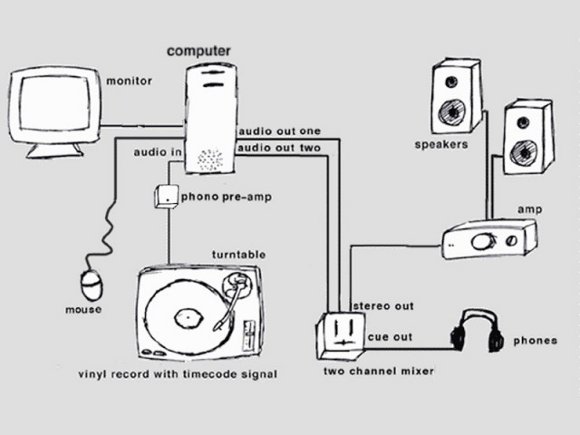
It’s something we take for granted now, but not so long ago, the only way to scratch and cue records was with analog vinyl. Now, of course, simulating those behaviors using digital records on turntables connected to computers is commonplace. But that hasn’t stopped the question of who owns the technology from spawning legal disputes. Most recently, a suit brought by patent claimants N2IT against M-Audio was dismissed. You can read the history from the time N2IT, a two-person company, launched their first commercial digital DJing (for BeOS, no less) back in the late 90s.
In patents, “first” is everything. And while N2IT had the first commercial product, it seems that broadly speaking the concept of how to make digital DJing work was not exclusively theirs. Chris Bauer writes CDM to share documentation of his own working prototype in 1998, before N2IT shipped their product. Nor is he alone. N2IT hasn’t yet brought suit against digital DJ maker Serato, and Serato’s Steve West publicly demonstrated research at the University of Aukland which leads back to 1996, well ahead of N2IT’s own demos.
It’s well worth reading the whole article for the timeline, but the basic concept is this:
the system created the illusion that the music being heard was actually on the record. and any piece of digitised music could be ‘played’ using this one special record and the spacedeck prototype. the system was fairly crude, but was certainly a working proof-of-concept. you could also perform needle-drops, and very rudimentary scratches. both of these techniques are essential for djing with vinyl, as this is how djs cue and beat-match the records they play.
the main steps of development were as follows:
1. research timecode. it soon became evident that SMPTE timecode would probably be the easiest to work with.
2. burn CDR with SMPTE and write code to ‘listen’ to it and get the speed, direction and position of the code.
3. research and write code to manipulate the speed, direction and position of digital audio files. i used quicktime.
4. write code to playback an audio file according to the incoming timecode data
5. get acetate record (dubplate) with SMPTE timecode on it, test with the system and and fine-tune timecode reading routines
surprisingly, there were no major problems in development. this is probably due to the concept being very simple.
And while N2IT indisputably had the first commercially-available product, this could call their patent claim into question:
the granting of N2ITs patent/s is extremely contentious, as they failed to mention various pieces of ‘prior art’ in their original application, including my project/MA thesis, which they were aware of as early as 2001. patent applicants are obliged to disclose this type of information if they are aware of it.
Chris’ full article:
the spacedeck project 2009